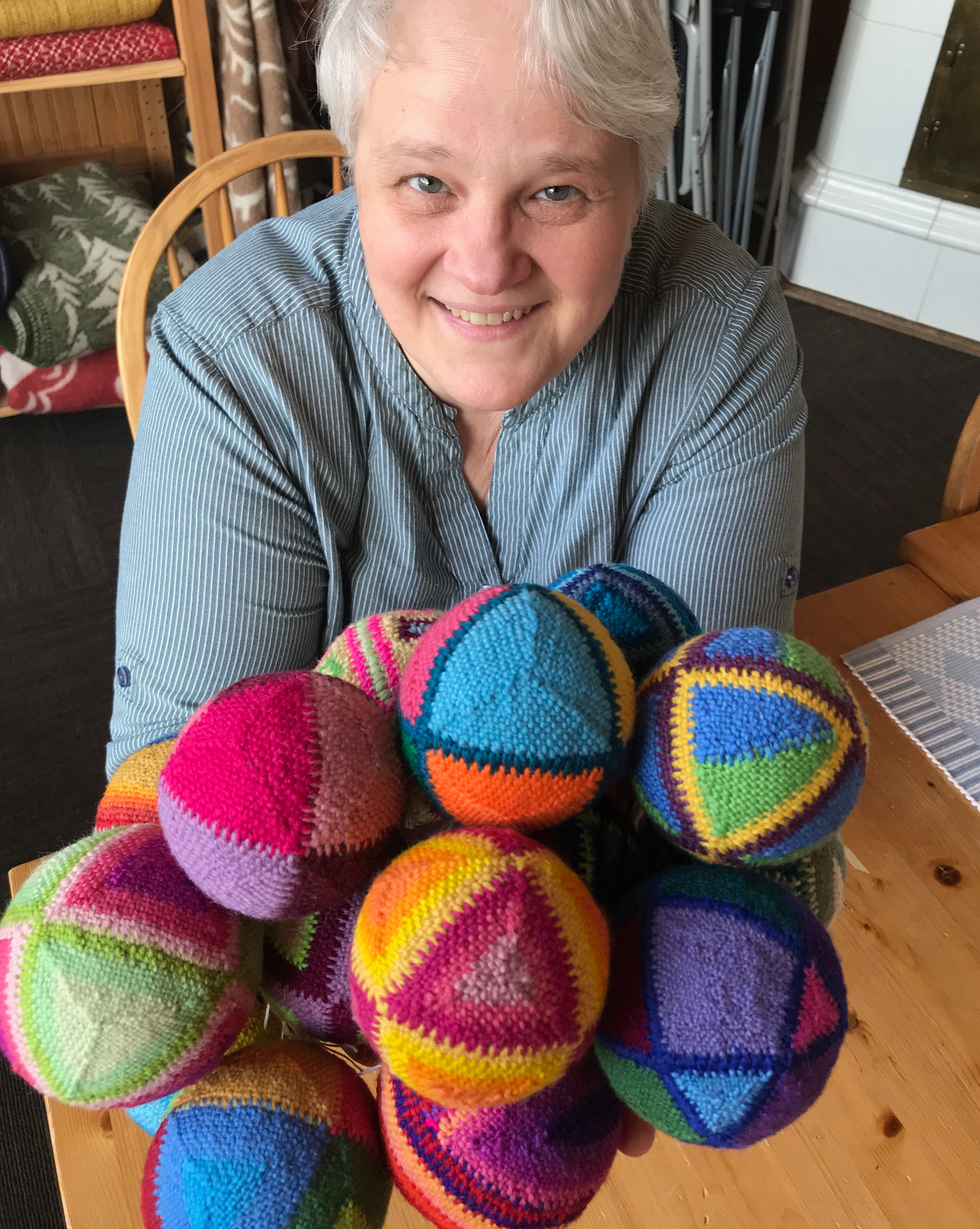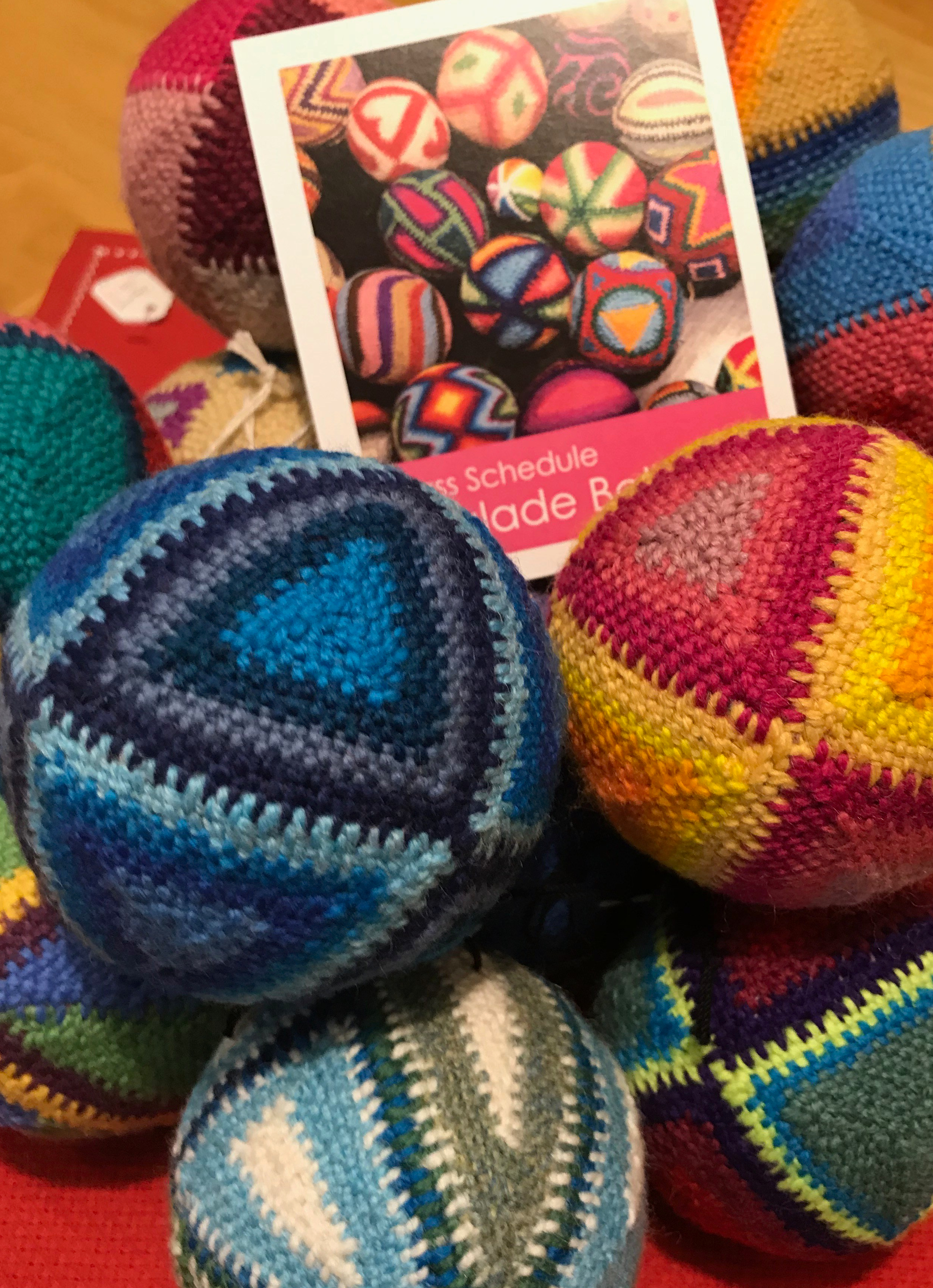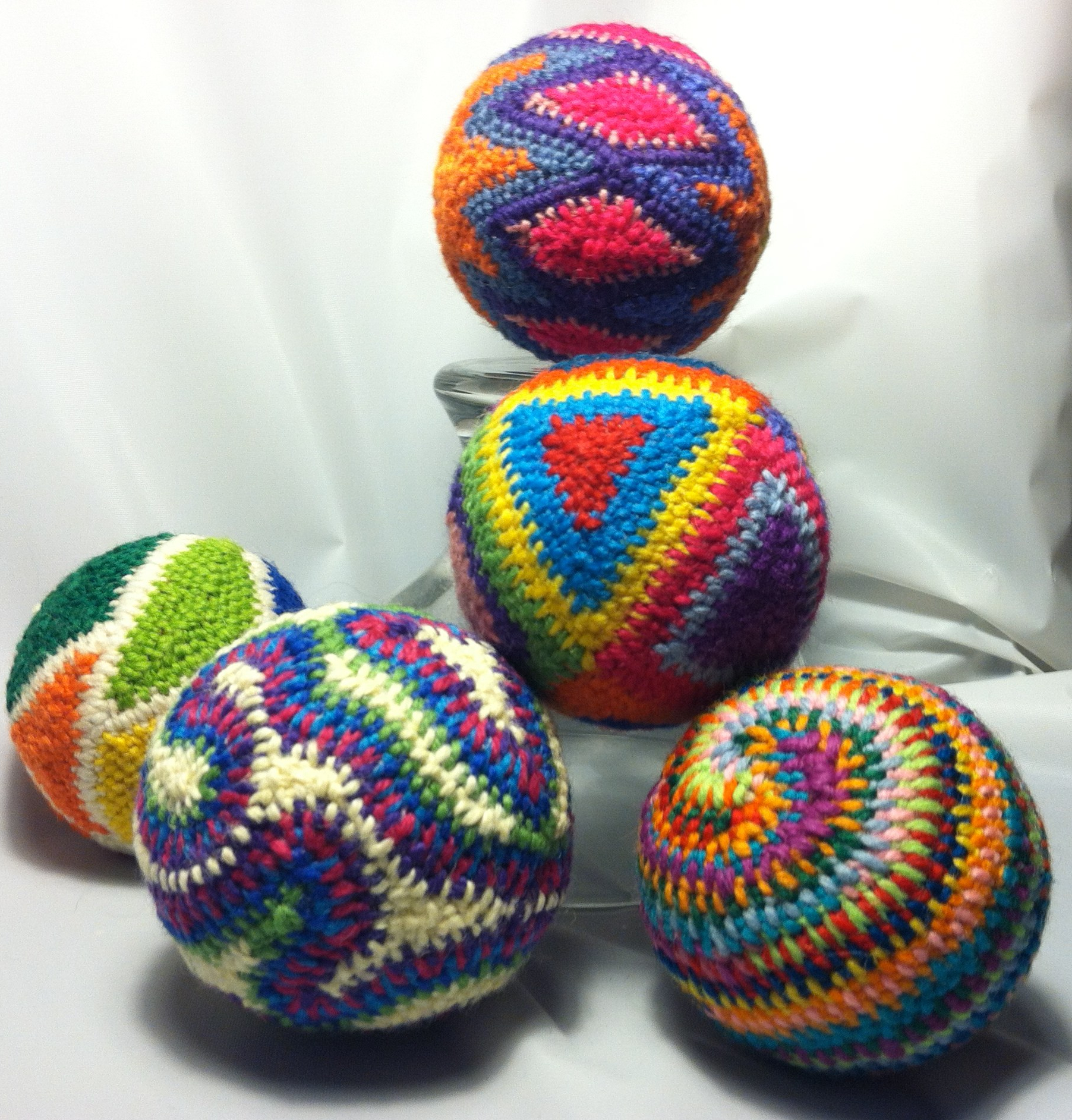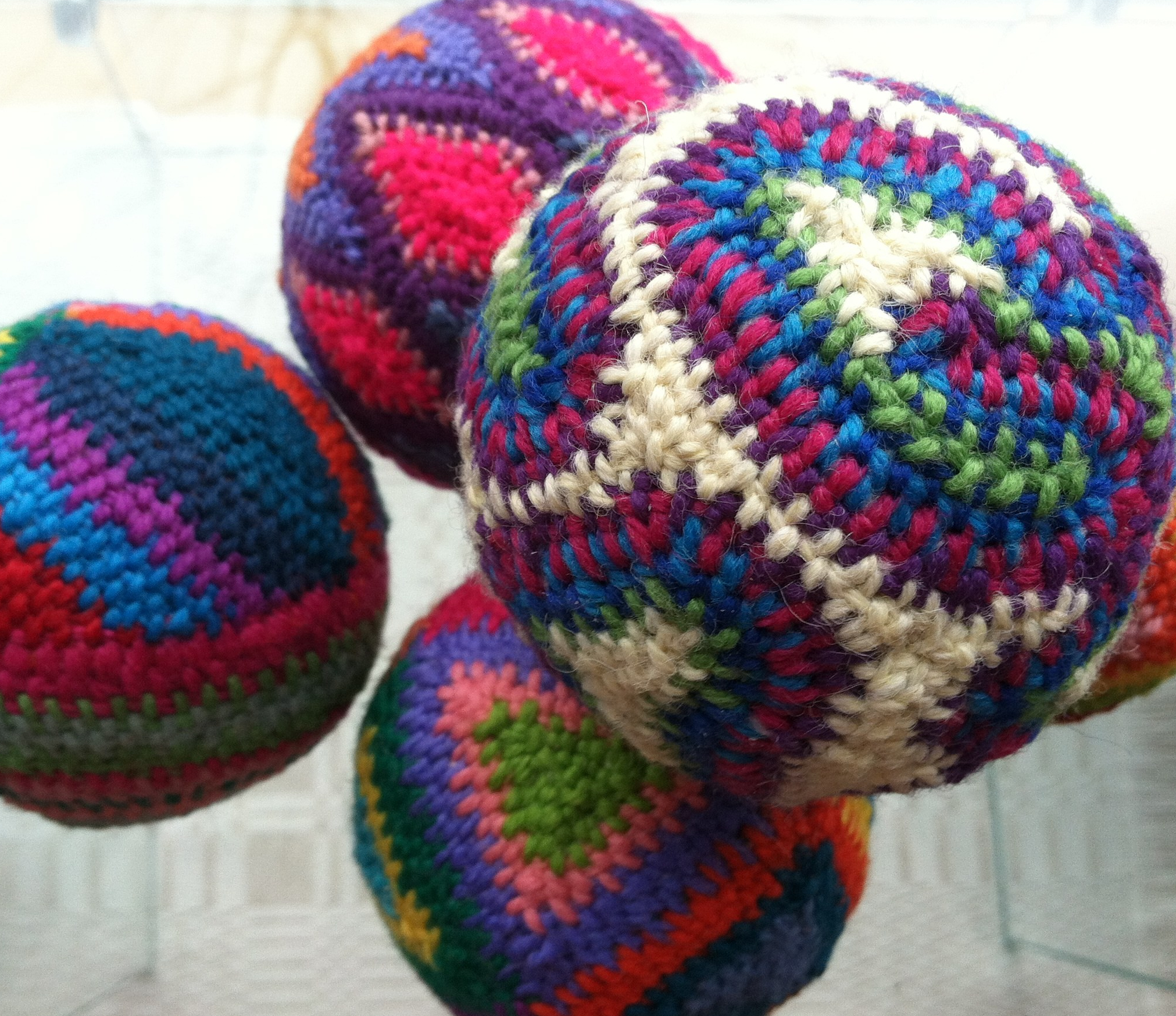
There is a basket on a table in Ingebretsen’s Needlework Store, piled high with colorful, stitched balls in a variety of patterns, all made by Kate Sterner. “I didn’t even have a word for them until I started to do research. I wrote to Hemslӧjden (The National Association of Swedish Handcraft Societies),” says Kate. “They sent me a back issue of their magazine that featured one person who made stitched balls of wool yarn. Now I had a name for what I was making – singlade bollar.”

Once Kate had a name for the craft, she was able to seek out other people who also made singlade bollar. There aren’t a lot of them, and the ones Kate contacted were equally happy to find someone who knew of their obscure folk art.
“It’s a craft ordinary working folk did. You could use the resources you had to make a toy for your child. What is inside varies according to what people had,” says Kate. The core is usually scrap yarn, cloth, or sometimes cork. It is a craft well suited for using yarn from one’s stash.
Kate’s Danish grandfather taught her how to make the balls when she was 10 or 11 years old. He had learned from his mother while a boy in Denmark and he enjoyed passing the craft down to another generation. “He was a man of few words. Mostly, he would sit beside me and help me stitch, saying ‘You do like this’”, says Kate. “I have a lot of happy memories of that.” Though several of her cousins also learned the craft from their grandfather, Kate is the one who kept making singlade bollar throughout the years, teaching others who found the balls intriguing. Her sister Anne is now helping her in her goal of keeping the craft alive.

Kate’s grandparents ran a bed and breakfast in Rochester, hosting families who were there for the Mayo clinic. Her grandfather would make singlade bollar for each of the guests, stitching their names into the design. Kate later learned that adding names and dates was her grandfather’s own innovation. “Traditional patterns are based on geometric patterns that can be laid out on a ball; for example, bisecting a sphere in three directions, producing eight triangles,” she explains.
After pursuing contacts through Hemslӧjden , Kate connected with a docent of a handcraft museum in southern Sweden. The docent, in turn, helped her connect with other singlade ball makers. They have since started a Facebook group and have been working to piece together the evolution of singlade bollar. Folk arts are rarely documented and one such as this, where people made toys for children from scraps, is unlikely to have attracted traditional historians’ notice.
Since Kate started teaching singlade bollar at Ingebretsen’s, Kate has heard from others across the United States who have the same response she initially had, one of “Oh, there is a name for this?” She welcomes questions and inquiries and has built a website to centralize information.
Archival evidence from museums in Sweden indicates that the craft started around the early 1800s. Singlade bollar have been found in southern Sweden, Denmark, and northern Germany. The craft is likely to have been spread throughout the region via the Baltic Sea trade route. The information Kate has is fragmented and she welcomes hearing from anyone with additional information about singlade bollar.

“I’m not letting the art form go extinct on my watch,” Kate says. Kate may be smiling as she says that, but she is serious in her work to show others a handicraft that can bring color, joy, and beauty into their lives. She’s pleased at the variations that are beginning to appear, both with people who have taken her class and with stitchers in the Facebook group. Some now make tiny singlade bollar earrings and hefty Christmas ornaments with tassels and bits of gold thread. Others are making baby rattles, necklaces, and singlade bollar with little cat faces on them. “The 8-triangle pattern is traditional and it’s an excellent pattern for beginners,” says Kate. “I am delighted when people learn and then take it another mile. It’s this creativity that will fuel a revival. Tradition-holders are the springboards for creativity. We need them in the same way we need innovators.”

In the meantime, Kate is ensuring that the tradition spreads, even if East Lake Street is far off the Baltic trade routes. She offers classes at Ingebretsen’s most months and demonstrates singlade bollar at events such as Open Streets and the Midtown Farmer’s Market.
To become a traditional singlade bollar maker or an innovator, start with Kate’s classes. To register, call the store at 612.729.9333. If you have information about singlade bollar and their history, or if you have one that’s been in your family and you want to learn more about it, please contact Kate. You can email her at katethingmaker@gmail.com.
This is so great! I have 2 balls that a little Danish lady made me about 53 years ago! I saw these balls just yesterday at Englebrestsens ( sorry misspelled) I am so excited and will probably sign up for a class!